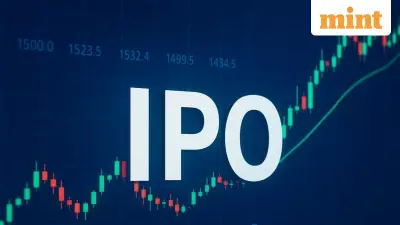
From Corporate Villain to Harvard Business School Case Study
Walmart, once considered one of America's most hated corporations, has achieved an extraordinary turnaround that's now being studied at Harvard Business School. The retail giant, previously vilified for low worker wages and destroying small businesses, has completely rewritten its corporate playbook through strategic investments in its workforce.
Under CEO Doug McMillon's leadership since 2014, Walmart shifted from a cost-cutting obsession to a people-first approach that's delivering remarkable results. The company's transformation story has become so compelling that Harvard Business School published it as a formal case study last month, examining how investing in employees can drive unprecedented business success.
The $2.7 Billion Gamble That Changed Everything
When McMillon took over as CEO, Walmart was struggling with several consecutive quarters of negative or flat same-store sales growth. The company's reputation had hit rock bottom, with communities actively protesting against new Walmart stores and public sentiment overwhelmingly negative about worker treatment.
Instead of traditional PR solutions, McMillon made a bold move: investing $2.7 billion in Walmart's workforce. This comprehensive investment included not just pay increases but more importantly, created clear career advancement paths and enhanced training programs. The strategy aimed to transform low-paying jobs into genuine careers with growth opportunities.
The retailer began offering better benefits and education programs to prepare workers for emerging roles within the company. This fundamental shift in treating frontline workers as valuable assets rather than disposable costs has yielded impressive results. Employee retention has improved by more than 10% since 2015, and 75% of field management roles are now filled by employees who started as hourly workers.
Wall Street Skepticism to 420% Returns
Initially, Wall Street reacted harshly to McMillon's people-focused strategy. When he announced the $2.7 billion investment during a shareholder meeting in 2015, Walmart's stock lost 20% of its value in a single day. Critics doubted whether investing in workers would deliver tangible business results.
A decade later, the results speak for themselves. Walmart shares have returned nearly 420% during McMillon's tenure, and the company's market capitalization has more than tripled. Despite intense competition from Amazon, Walmart remains the largest publicly traded company in the United States by sales revenue.
The dramatic turnaround demonstrates that long-term investment in human capital can generate substantial shareholder value, even when short-term market reactions are negative.
AI Strategy Informed by People-First Philosophy
As Walmart navigates the AI revolution, the lessons from its people-focused transformation are shaping its approach to emerging technology. While many corporations view artificial intelligence primarily as a cost-cutting tool for reducing headcount, Walmart is taking a more measured approach.
Harvard Business School professor Leonard Schlesinger, who co-authored the Walmart case study, notes that Walmart's AI strategy differs significantly from other large employers. "That is very much a differentiator between Walmart and the strategies at other large employers, where AI is merely a tool to lay employees off," Schlesinger observed.
Walmart has indeed embraced AI technology, partnering with OpenAI to enable purchases through ChatGPT and automating warehouse operations. However, the company recognizes the importance of balancing efficiency with workforce development. McMillon has stated that "it's very clear that AI is going to change literally every job," but Walmart's goal is "to create the opportunity for everybody to make it to the other side."
This philosophy contrasts sharply with approaches from other corporate leaders, such as Accenture's CEO, who discussed "exiting on a compression timeline" employees who can't be retrained for the AI age.
Walmart's leadership background may explain this people-centric approach to technology. Both McMillon and his successor, John Furner, began their Walmart careers in entry-level positions—McMillon as a teenage warehouse worker and Furner as an hourly associate. This firsthand understanding of frontline roles has informed the company's commitment to workforce development during technological transformation.
As McMillon prepares to step down at the end of January, the rehabilitation of Walmart's reputation stands as one of his most significant achievements. The company that was once corporate America's primary villain has not only transformed its business performance but may also avoid being cast in that negative role during the upcoming AI revolution.





